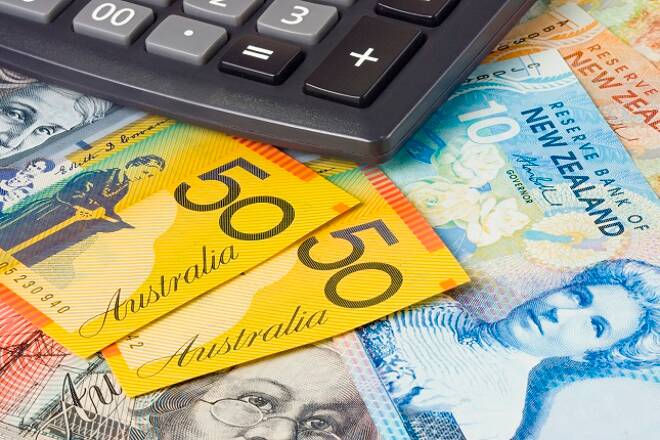Advertisement
Advertisement
AUD/USD and NZD/USD Fundamental Daily Forecast – Pressured by Widening Interest Rate Differential
By:
The AUD/USD and NZD/USD are likely to remain under pressure on Tuesday as long as rising Treasury yields continue to make the U.S. Dollar a more attractive investment. Essentially, it’s the divergence in monetary policy between the hawkish U.S. Federal Reserve and the dovish Reserve Banks of Australia and New Zealand that’s driving the price action.
The Australian and New Zealand Dollars are under pressure early Tuesday because rising U.S. Treasury yields and expectations of additional rate hikes by the U.S. Federal Reserve are making the U.S. Dollar a more attractive investment.
At 0700 GMT, the AUD/USD is trading .7360, down 0.0020 or -0.28% and the NZD/USD is at .6770, down 0.0015 or -0.20%.
Position-squaring ahead of Wednesday’s New Zealand Trade Balance report and Australia’s quarterly Consumer Price Index report could also be contributing to the weakness.
A jump in benchmark 10-year U.S. Treasury yields to a five-week high provided most of the support for the U.S. Dollar on Monday. The surge in yields came despite criticism from President Donald Trump about the impact of the strength of the greenback and Federal Reserve interest rate rises on the economy.
In other news, on Monday the U.S. reported that Existing Home Sales fell to 5.38 million units, a drop from the previously reported 5.41 million units. Traders were looking for 5.46 million units.
Early Tuesday in Australia, the Conference Board’s Leading Index grew 0.1%, matching last month’s report.
Forecast
The AUD/USD and NZD/USD are likely to remain under pressure on Tuesday as long as rising Treasury yields continue to make the U.S. Dollar a more attractive investment. Essentially, it’s the divergence in monetary policy between the hawkish U.S. Federal Reserve and the dovish Reserve Banks of Australia and New Zealand that’s driving the price action.
The Fed is likely to raise rates at least two more times in 2018 and perhaps as many as three times in 2019. At the same time, the financial futures markets are indicating that the RBA and RBNZ are not likely to raise their benchmark rates until late 2019 or early 2020.
Prices could fall even harder if Trump goes all in on additional tariffs against China like he threatened last week.
About the Author
James Hyerczykauthor
James Hyerczyk is a U.S. based seasoned technical analyst and educator with over 40 years of experience in market analysis and trading, specializing in chart patterns and price movement. He is the author of two books on technical analysis and has a background in both futures and stock markets.
Advertisement
